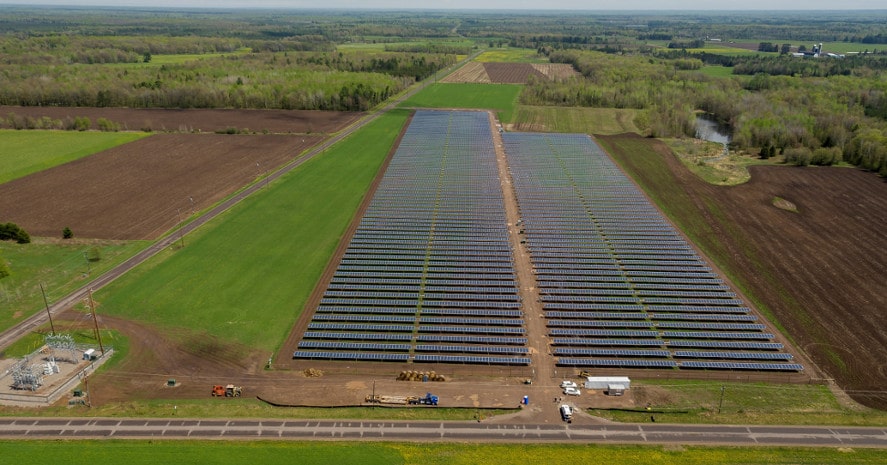Alliant Energy is going to increase the total installed solar capacity of Wisconsin 1o-fold by 2023. The utility has announced its Powering What’s Next plan, which includes expanding its Wisconsin solar energy generation by up to 1 gigawatt.
Alliant will be kicking off the upcoming development, at least we are to assume it is development as the company gave no reason to believe it would be in the market to buy any projects, with a 1 MW community solar development in Fond du Lac County. It will be the utility’s first community solar project in the state. Alliant also shared that this project is not a part of the 1 GW in future development, so one could say that 1,001 MW is the real figure.
While only sitting with a total installed solar capacity of around 93 MW, the last two years have shown the potential for an aggressive energy future in Wisconsin. In April, regulators approved Invenergy’s 300 MWac Badger Hollow Solar Farm and NextEra’s 150 MWac Two Creeks Solar project. Renew Wisconsin also notes that two different utilities have announced power contracts with two solar projects totaling 249 MW, and that the Richland County Board of Zoning gave its approval for a 50 MW solar project in the town of Buena Vista.
And if we really want to go big picture into the entire scope of planned development in the state, we take ourselves to the MISO interconnection queue. The queue shows 34 active solar projects totaling over 5.5 GWac that have been proposed in the state, although, as is always true, it is unclear how many of those projects will ever get to see the light of day and then turn that light into energy. Interestingly enough, no Wisconsin project on that interconnection queue has an anticipated in service date any later than October 2022.
This development will all be sorely needed in order to reach an executive order directing 100% carbon-free power in the state by 2050. That measure was signed by Governor Tony Evers in August in order to, and this is the most Wisconsin quote ever, protect the state’s “iconic agricultural, hunting, fishing, and outdoor recreation opportunities.”
The seven projects listed earlier, assuming they all reach commercial operation, will clock in at 749 MW, a total which experts have relayed is enough to supply 2.1% of the state’s annual electricity needs. Using that math, each 250 MW of development represents 0.7% of the state’s annual electricity need. Keep that number handy.
With that in mind, we can estimate that this entire development plan of Alliant’s will represent 2.8% of the state’s annual electricity need. If you assume the entire interconnection queue gets completed and goes on line (which is unrealistic but let’s have a little fun, shall we?) that number becomes 15.4%.
It’s going to take a lot of work for Wisconsin to reach its 100% carbon-free power by 2050 goal, but as each day passes it seems like more and more companies are committing to renewable development in the state. Once again it should be recognized that Wisconsin’s valiant fight against climate change is being spurred by a want to keep the state’s hunting and fishing territories intact. Never change, Wisconsin.
This content is protected by copyright and may not be reused. If you want to cooperate with us and would like to reuse some of our content, please contact: editors@pv-magazine.com.









What is going to be done about storing renewable energy to supply electricity for at least one week when there is no wind or sun or just not enough ?
First off, we currently have plenty of natural gas and other fossil fuel capacity to meet those times (usually in the winter) in northern regions where there is little wind or sun. There is also transmission everywhere but Hawaii to bring in power from other regions.
Looking longer term and towards deep decarbonization, there are other options. For many regions power from hydroelectric dams can be imported; another is electricity generation from green hydrogen, and there is the possibility of using a gas pipeline network to move it around the country.
For the Midwest and regions with a lot of agriculture, there is also the possibility that biogas could play a minor role at times like these. The final solution will probably be a mix of all these, used to greater or lesser degree, and this problem is somewhat ameliorated (for the near future) by the presence of so many existing nuclear power plants in the Midwest.